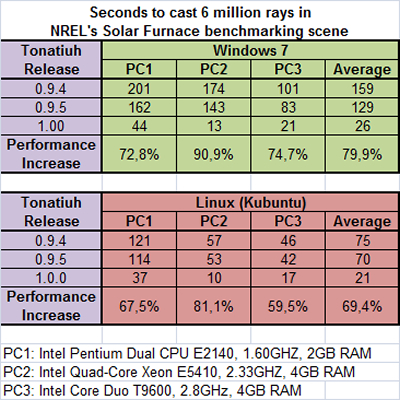- It corrects a bug detected in the program's Update Manager of version 1.1.2, which precluded the Update Manger to fulfill its function.
- It introduces changes in the core of the Tonatiuh program that improves and simplified its structure.
- It adds two new shape plug-in to the list of standard Tonatiuh plug-ins: The trough and the surface of revolution versions of the standard non-imaging Trumpet-like concentrator.
As usual, the trough or translational sweeping version of the trumpet-like concentrator plug-in represents only one-side of the translational sweeping trumpet. This allows Tonatiuh users to define complex n-sided trumpet-like concentrators by combining several of these sides and selecting appropriately their input and output lengths.
The following figure shows the parameters that are used in Tonatiuh to define the translational sweeping version of the trumpet-like concentrator shape plug-in added to the new release of the program.
 |
| From Tonatiuh Blog Figures |
Contrary to others rotational geometry standard Tonatiuh shape plug-ins, the rotational geometry version of the trumpet-like plug-in those not allow the user to define the rotational sweeping angle, but assumes that this angle is always 360 degrees. This limitation will be corrected in future versions of this plug-in.
The following figure shows the parameters that are used in Tonatiuh to define the rotational sweeping version of the trumpet-like concentrator plug-in added to the new release of the program.
 |
| From Tonatiuh Blog Figures |
As always, if you find bugs in Tonatiuh or in any of its plug-ins, please, take the time to report those errors using the "Issues" tab in Tonatiuh's website at Googlecode. Furthermore, if you have suggestions on how to improve the program or increase its functionalities, please, let us know, either by adding comments to this post, or better by participating on the corresponding discussion of the Tonatiuh users group.
Best regards. Enjoy!









